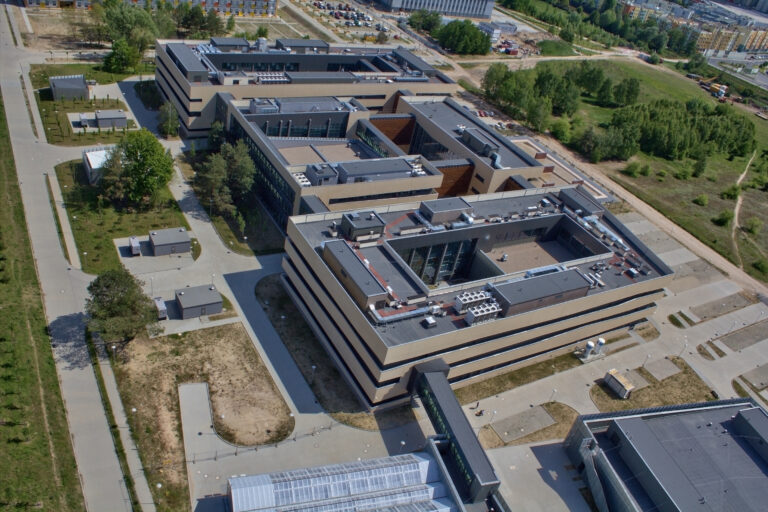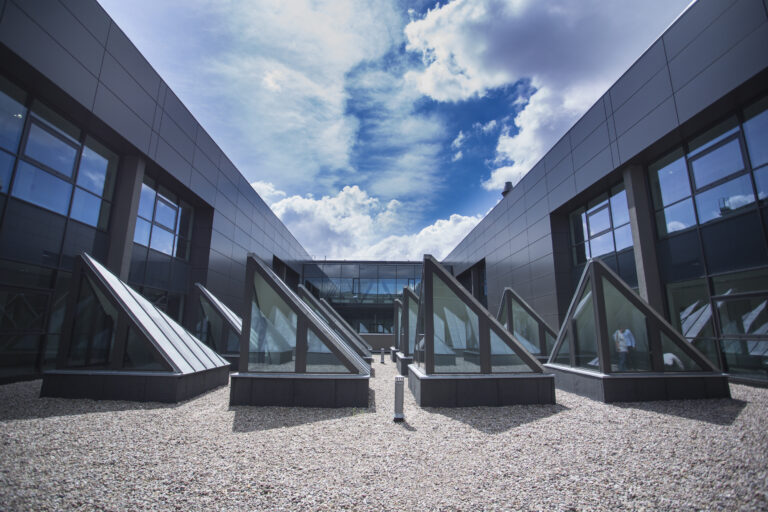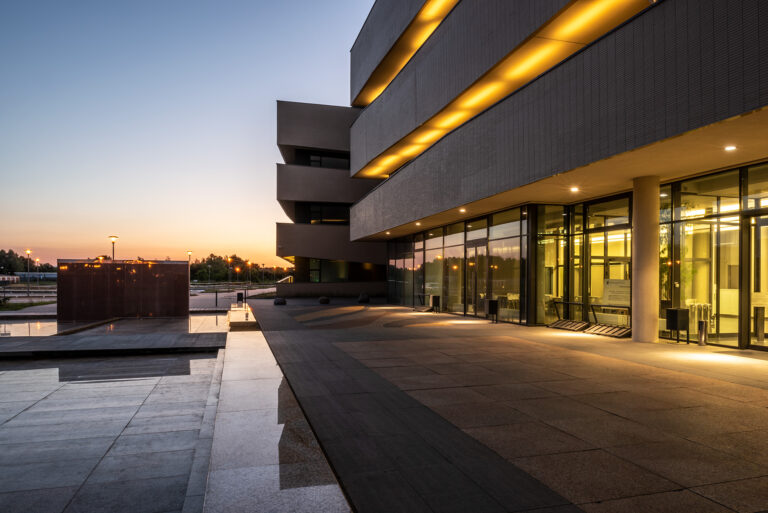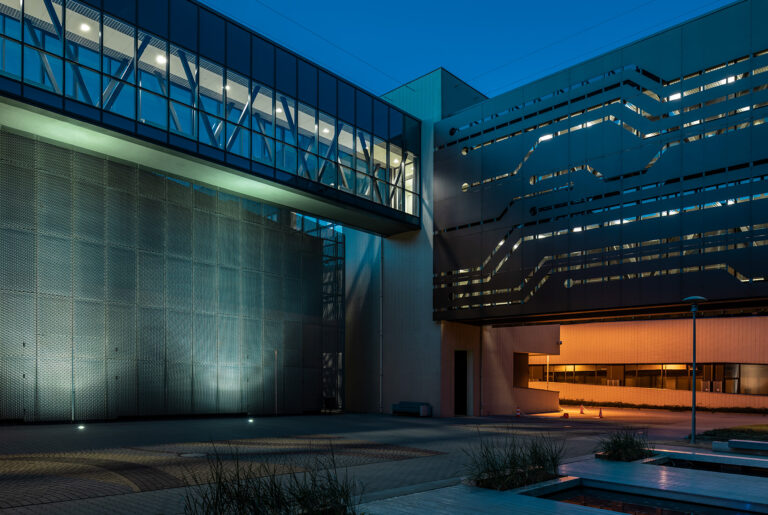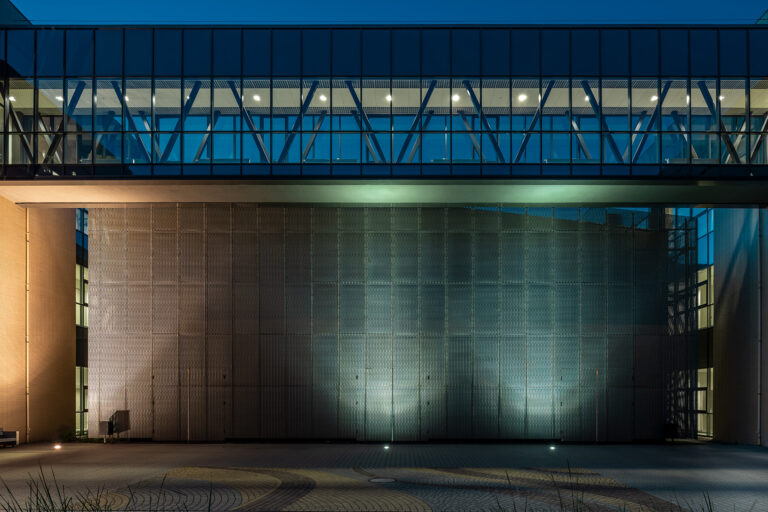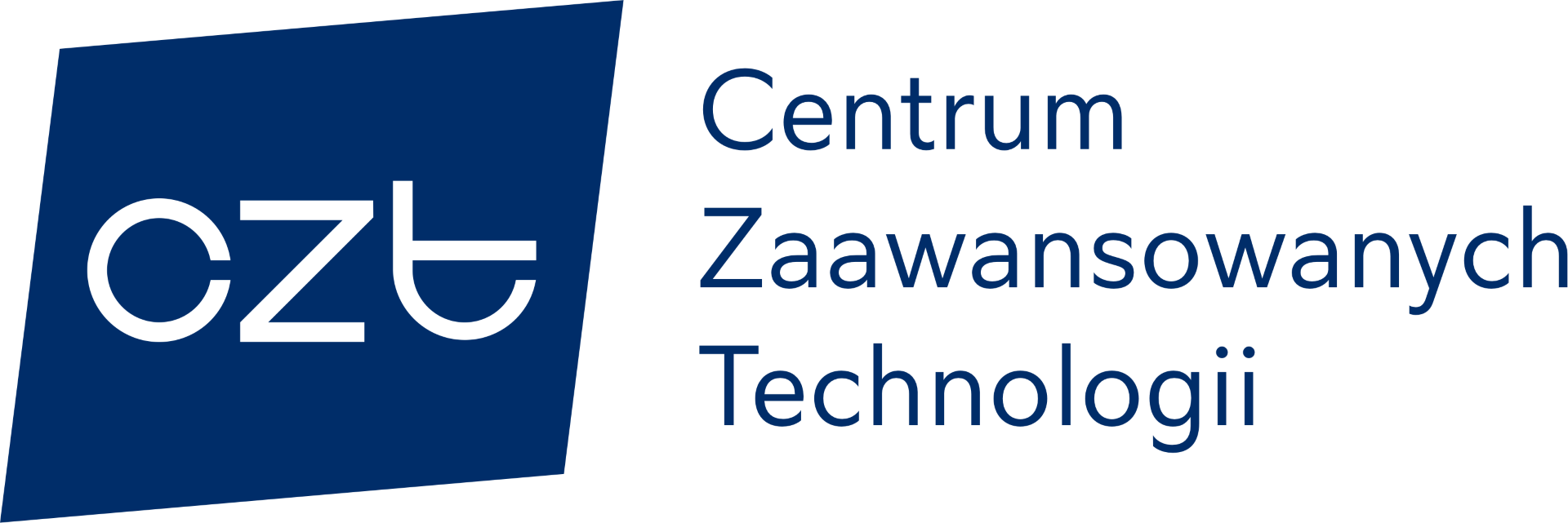History
The foundation of the Poznań knowledge transfer model, developed and implemented in Poznań, was the establishment of the Wielkopolska Centre for Advanced Technologies (WCAT) – Materials and Biomaterials consortium in 2006, as part of an investment project under the Innovative Economy Operational Programme, co-financed by the European Regional Development Fund. The WCZT consortium comprises five Poznań-based public universities, four institutes of the Polish Academy of Sciences, one research institute, and the Poznań Science and Technology Park (PPNT) of the Adam Mickiewicz University Foundation.
Prof. dr hab. Bogdan Marciniec initiated the consortium, served as its first Director, and chaired the investment project’s Coordination Committee. The total cost of the project, including specialized equipment, was €63 million (over PLN 250 million). Construction of the Center, located on the Morasko Campus, was underway as the Center of Advanced Technologies affiliated with Adam Mickiewicz University (CAT AMU). The Center began operations in December 2015.
The first Director of the CZT UAM was prof. dr hab. Bogdan Marciniec (2013–2017). During the 2017–2024 term, the Director of the Center was prof. dr hab. Bronisław Marciniak (formerly Rector of Adam Mickiewicz University in Poznań from 2008–2016). Currently, the Director of the CZT is prof. dr hab. Artur Stefankiewicz.
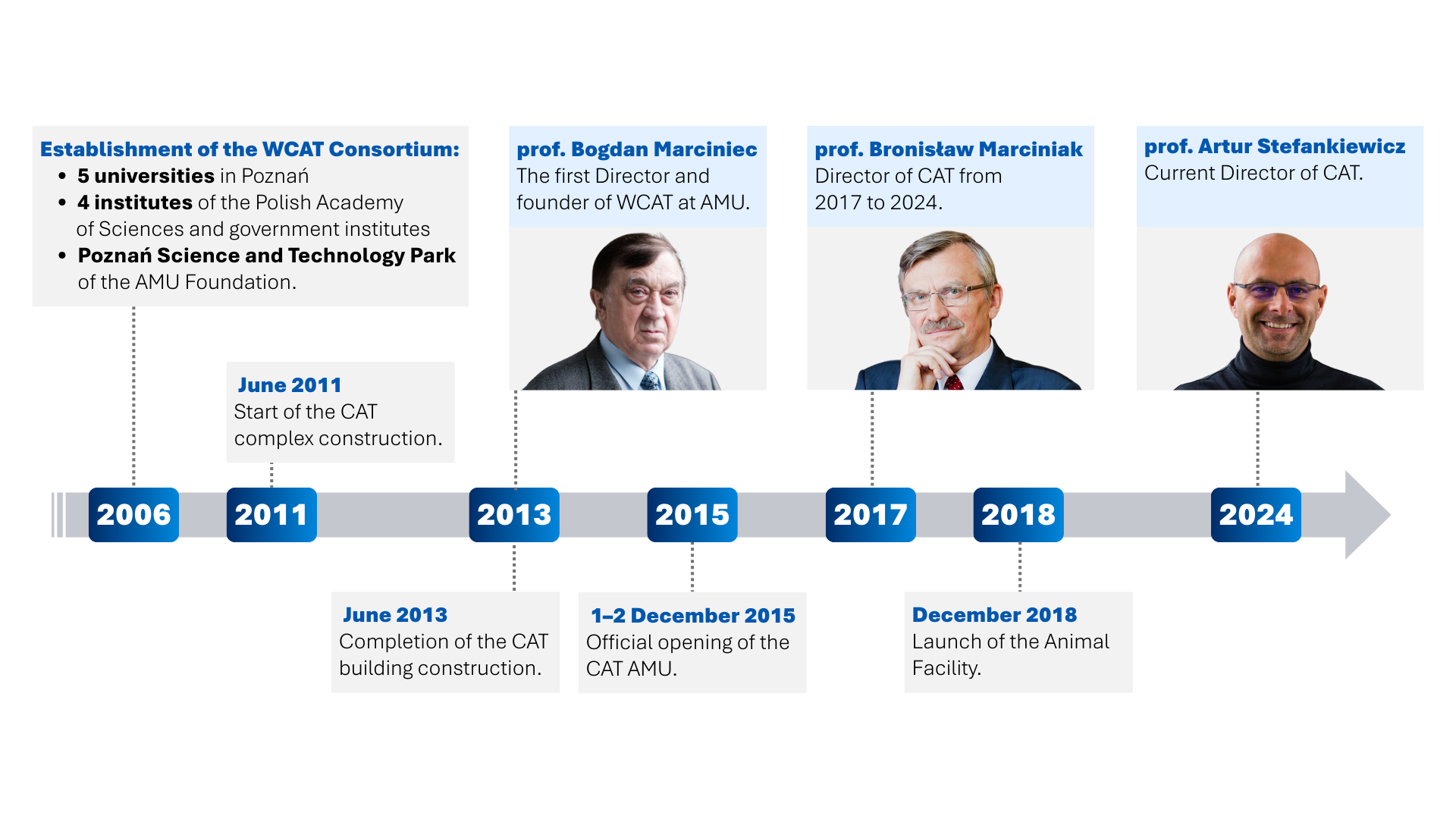
The core of the multidisciplinary activities of this Center (based on the mission of chemical sciences) is the development of original, selective routes for the synthesis of highly processed chemicals, biochemicals and agrochemicals (so-called fine chemicals), as well as a new generation of bio- and nanomaterials and their precursors, the characterization of their physicochemical properties, and then the development of advanced technologies and biotechnologies for their production for optoelectronics, medicine, pharmacy, agriculture, ceramics and many fields of high-tech industry.
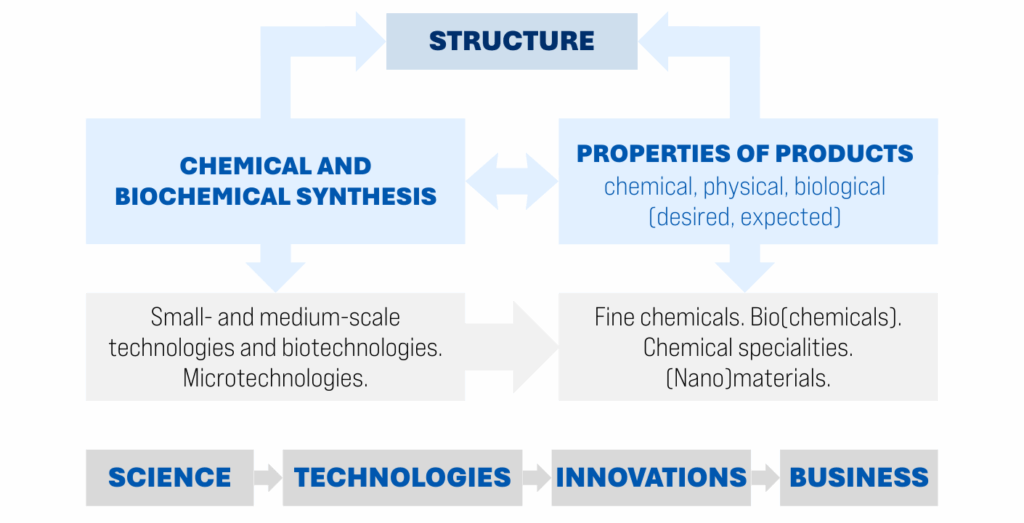
The research aims to establish a technological foundation for a range of bioorganic chemistry and biotechnology applications in healthcare, agrotechnical applications, and the food industry. The proposed model ensures the appropriate relationship: science-basic research (at Universities and PAN institutes), applied and developmental research (at ministerial institutes, PPNT, and CAT), innovation (business) (CAT and PPNT), by developing all the elements necessary for the effective transfer of knowledge to economic practice. Evidence of this innovative practice was the CAT’s two-time distinction (in 2016 and 2017) as the “EuroSymbol of Science and Business Synergy.”
